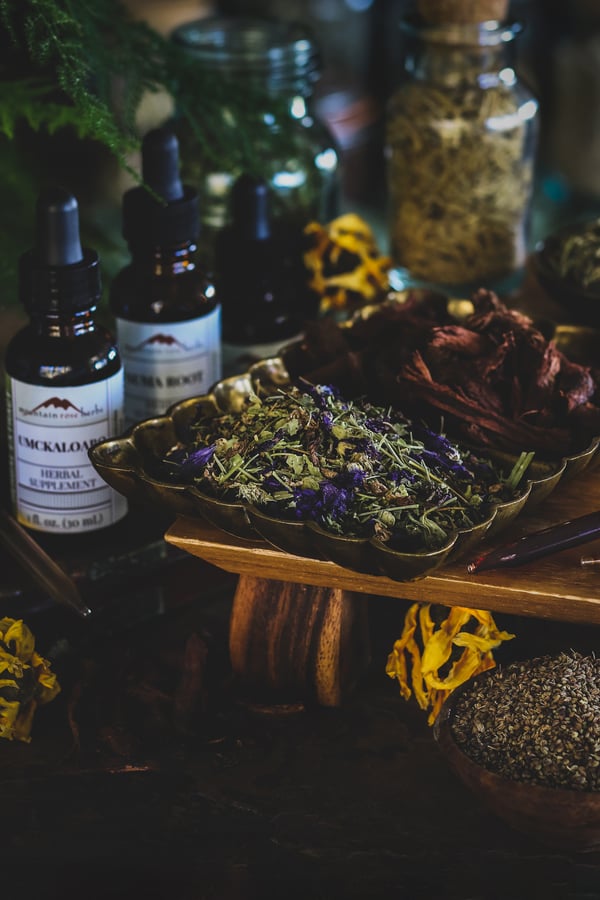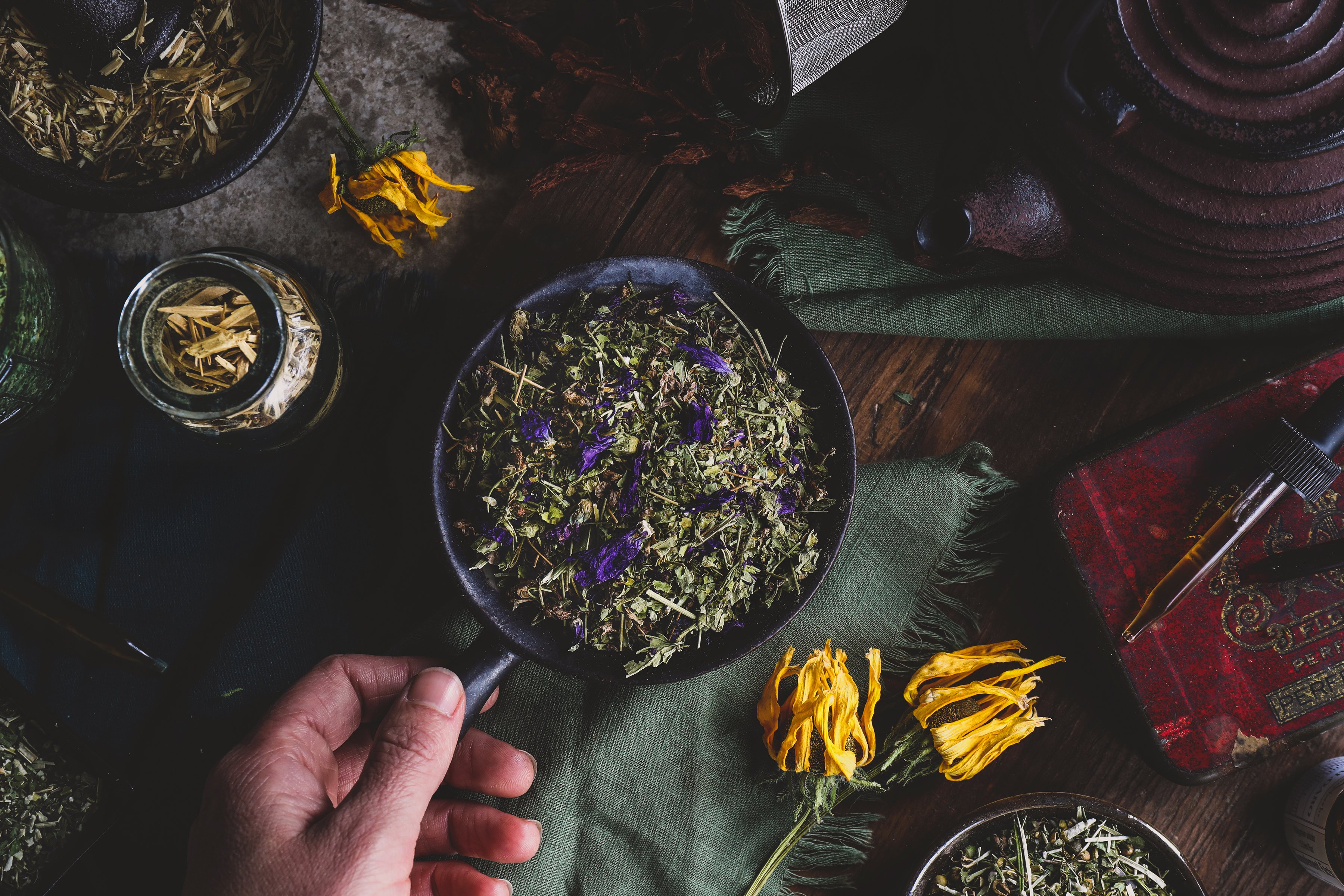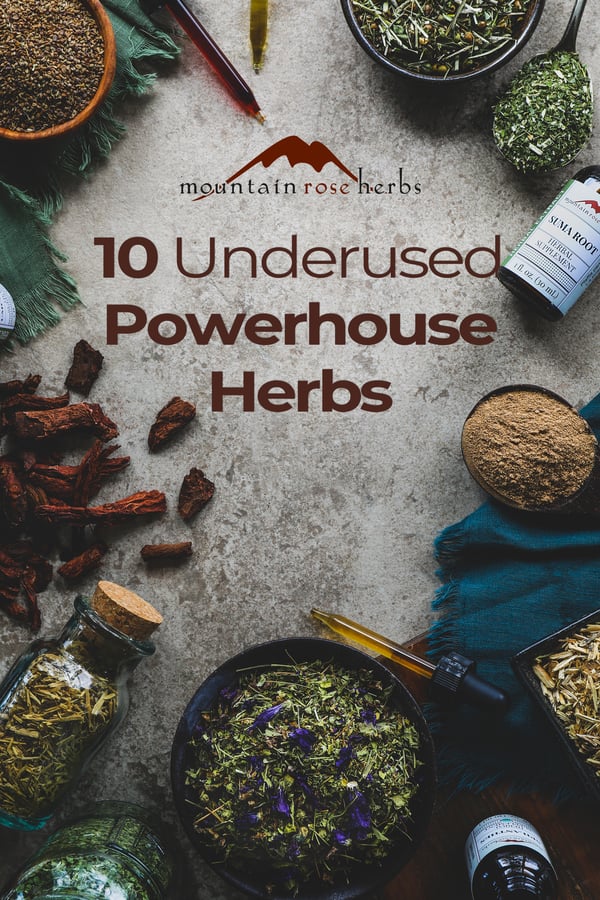Whether you are new to herbalism or have been practicing for a while, we hope you enjoy this list of unusual herbs (provided in alphabetical order by common name):
- Ajwain Seed (Trachyspermum ammi): an aromatic seed popular throughout India, typically dry roasted or fried in ghee as a culinary spice. Pungent and slightly bitter, ajwain is a go-to herb in Ayurveda for minor digestive complaints. Also called carom or oma seed, it is frequently blended with fennel seed.
- Anise Hyssop (Agastache foeniculum): a mint family member that is entirely distinct from both anise and hyssop. As its common name suggests, this herb has a licorice-like flavor often enjoyed in pleasure teas and can be used in culinary recipes as well. Also called blue giant hyssop or licorice mint, the aerial portions have a history of use as an expectorant and in minor digestive complaints.
- Camu Camu (Myrciaria dubia): native to Brazil and Peru, this tree grows along riverbanks and produces a cherry-like fruit called camu camu. With little documented history of traditional uses, the fruit was only recently discovered to have a high vitamin C content. Today, the powder is popular amongst health advocates who use it to give smoothies and culinary recipes an added healthful boost.
- Figwort (Scrophularia nodosa): long used in traditional European herbalism. Figwort was also an important herb amongst 19th century Eclectic practitioners, although it has since fallen out of popularity. As its botanical nomenclature suggests, figwort was utilized for its affinity for the endocrine system and lymph system.
- Malva (Malva sylvestris): a relative of well-known marshmallow, malva is used in many of the same ways thanks to its soothing and mucilaginous properties. Also known as high mallow or common mallow, the above ground portions work especially well on the respiratory system, digestive system, and urinary tract. This underused herb can be infused in homemade tea blends, made into an herbal syrup, or applied topically.

- Muira Puama Bark (Croton echioides): long used by indigenous tribes of the Amazon rainforest, muira puama is revered as a tonic for supporting the functioning of the reproductive system. Considered energetically warming and relaxing, the bark is prepared in a variety of ways including tincturing.
- Speedwell (Veronica chamaedrys): this member of the plantain family has a history of use in traditional Western herbalism as an expectorant, nervine, and tonic for a wide range of ailments. Slightly bitter and astringent to taste, with a tea-like scent, speedwell was historically widely popular in Europe as a green tea substitute. It also goes by the name gypsy weed.
- Spilanthes (Acmella oleracea): native to Brazil and cultivated around the world, spilanthes is called upon in a variety of herbal traditions including Traditional Chinese Medicine, Ayurveda, and Western herbalism. It is also referred to as toothache plant, electric daisy, or buzz buttons for its tingling and light numbing sensation. Its saliva inducing actions make spilanthes a go-to for minor mouth complaints. It also can make an effective addition in herbal immunity formulations.
- Suma Root (Pfaffia paniculata): this adaptogen hails from the Amazon rainforest, where it is called ‘para toda’, meaning ‘for all’. Traditionally employed as a tonic herb, this ground vine was historically considered a sort-of herbal panacea. These days, the root is referred to as Brazilian ginseng and is becoming increasing popular in natural wellness formulations for its herbal actions and vanilla-like flavor.
- Umckaloabo Root (Pelargonium sidoides): native to South Africa, this herb has a long history of indigenous use in minor upper respiratory and digestive complaints. Today, umckaloabo is used to support healthy sinus, nasal, and bronchial function.* The root is often prepared as a decoction, incorporated into herbal syrups, or made into a tincture.
For me, two allures of herbalism are the breath of herbal allies and the guarantee of always learning something new. The listed uncommon herbs do both! I hope one (or many) of these little-known gems move you beyond the basics to find a new place in your home or heart. Wishing you the best in your herbal exploratory adventures!
Looking to learn more about herbalism?
Explore this Guide to Basic Herbal Actions
You may also be interested in:
- Organic Herb Sourcing: The Bigger Picture
- A Complete Guide to Brewing Tea
- How to Make Herbal Tinctures
*These statements have not been evaluated by the Food and Drug Administration. These products are not intended to diagnose, treat, cure, or prevent any disease. We recommend that you consult with a qualified healthcare practitioner before using herbal products, particularly if you are pregnant, nursing, or on any medications. For educational purposes only.












